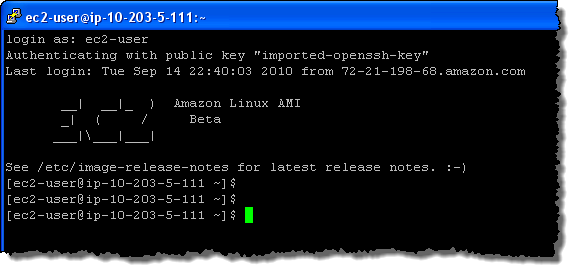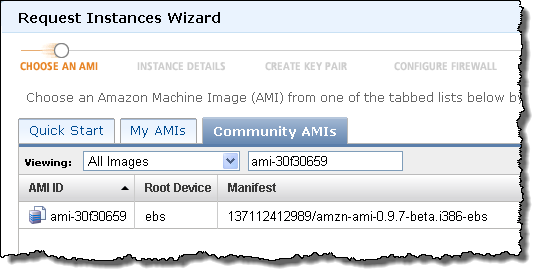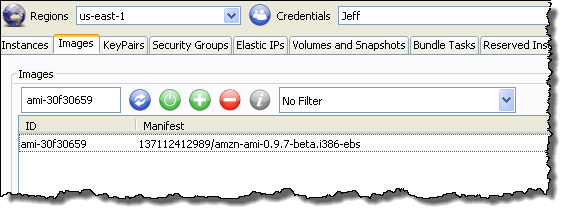AWS News Blog
Introducing The Amazon Linux AMI
|
|
Yes, you read that right. We now have a Linux AMI tuned for AWS!

Many of our customers have asked us for a simple starting point for launching their Linux applications inside of Amazon EC2 that is easy to use, regularly maintained, and optimized for the Amazon EC2 environment. Starting today, customers can use Amazon Linux AMI to meet these needs. This just adds to the great selection of AMI options in Amazon EC2 that range from free to paid, giving you access to the operating systems and environments you need.
Available in 32 and 64 bit form in all of the AWS Regions, Amazon Linux starts out as lean and mean as possible; no unnecessary applications or services are running. You can add more packages as needed, and you can do so very quickly and easily from a package repository that we host in Amazon S3.
The AWS command-line tools and libraries are pre-installed and ready to use. We’ve also integrated Ubuntu’s CloudInit to simplify the process of customizing each instance after it boots up. You can use CloudInit to set a default locale, set the hostname, generate and set up SSH private keys, and to set up mount points. You can also run custom commands and scripts on initial startup or on each reboot, as desired.
The Amazon Linux AMI can be booted from the AWS Management Console‘s Request Instances page at the usual charge for Linux/UNIX instances. This is a supported AMI; customers who use AWS Premium Support will be able to ask for help with installation and usage problems. Of course, everyone can use the forums to ask for help or to report bugs.
We will provide patches and security updates as needed. We also update the Amazon Linux AMI on a regular basis, and we’ll create a new set of AMIs each time we do so.
If you’ve used other Linux AMIs in the past, this one should hold few surprises. Nevertheless, here are a few things to keep in mind:
- Log in as ec2-user rather than as root.
- For S3-backed instances the first ephemeral volume is mounted at /media/ephemeral0.
- Complete release notes are available in file /etc/image-release-notes.
- The system is running kernel 2.6.34.
Read the Amazon Linux AMI User Guide [PDF] to learn more.
Update 1:
You can find the current AMI ID’s for each region on the Amazon Linux page. Once you have the ID you can search for it using the Community AMIs tab in the AWS Management Console‘s EC2 Request Instances Wizard:

You can do the same search using the Images tab in Elastic Fox:

Update 2:
The source code is available for reference purposes. Open up the user guide and search for the section labeled Accessing Source Packages for Reference for full information on how to download it to your instance.
— Jeff;
